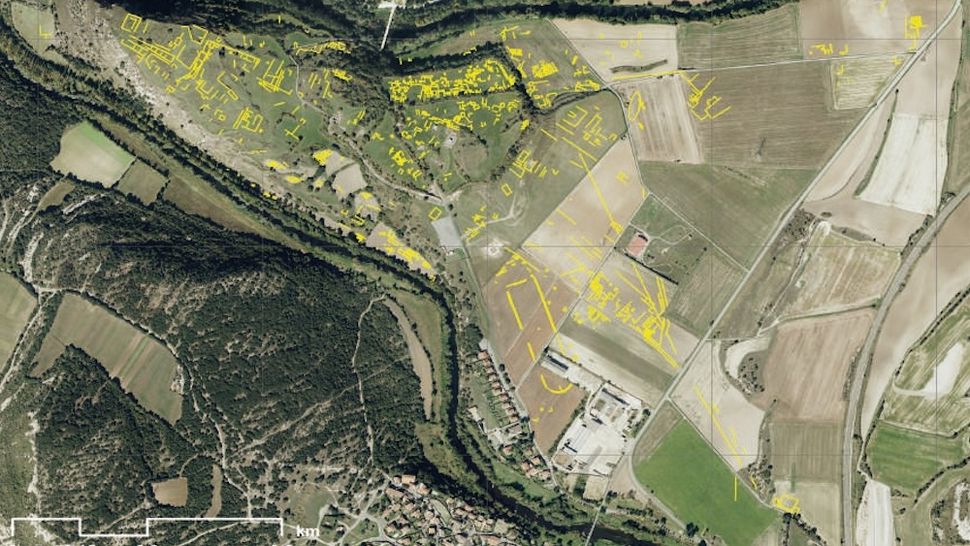Lasers reveal Roman-era circus in Spain where 5,000 spectators watched horse-drawn chariot races
By Jennifer Nalewicki published 15 hours ago
Researchers used lidar technology to map Iruña Veleia, a Roman-era city in Spain.

A lidar map of Iruña Veleia, a Roman-era city in Spain. (Image credit: Provincial Council of Álava)
Laser beams have revealed unknown structures, including the remains of a circus that hosted horse-drawn chariot races, that were once part of a sprawling Roman city hidden in what is now northern Spain.
Archaeologists announced their findings, which were part of a new pilot program, July 17, at a news conference. The researchers mapped the site of Iruña Veleia in what is now Álava, a province in the Basque Country, using lidar (light detection and ranging), in which laser pulses are beamed at the landscape from above and measured when they bounce back in order to image the terrain's surface, according to a translated statement from the Provincial Council of Álava.
The new aerial map reveals several structures spread out across the 620-acre (251 hectares) site, including a 919-foot-long (280 meters) by 236-foot-wide (72 m) Roman "circus" arena that seated 5,000 spectators and hosted horse-drawn chariot races. This is only the third known Roman circus site in the Iberian Peninsula.
Chariot racing was a popular pastime in ancient Rome. In fact, there was an entire industry focused on it. And much like avid sports fans of today, enthusiasts aligned with their favorite stables of horses and charioteers and would travel from near and far to cheer them on, according to the World History Encyclopedia.
More:
https://www.livescience.com/archaeology/romans/lasers-reveal-roman-era-circus-in-spain-where-5000-spectators-watched-horse-drawn-chariot-races
